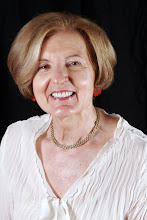Confidence to Lead Differently
I am a person who believes the system or establishment is sometimes unfair. If we - the kind, sensitive and thoughtful people - were in charge, running the team, the department or our country, we believe that things would be very different.
I have led volunteer organizations and corporate departments. When I lead, I produce the planned or desired results and my colleagues have a lot of fun (most of the time).
I believe many women (and a few good men) "lead differently", and I want to provide help and support for people to lead in new ways.
We can learn to follow our hearts, to support each other and - sometimes - ignore bosses, corporate procedures, business gurus and business school text books.
I believe that if we put the needs of our family first and the needs and welfare of our community of colleagues and clients at the heart of our daily activities, we will make choices that best serve the world.
Recently I heard Christine Lagarde interviewed on Sixty Minutes. The interviewer said she takes her work seriously, but not herself. For me, her most memorable part of the interview was near the end when she said "When my father passed away and then when later on I gave birth, those are sort of ground-breaking experiences that put everything else into perspective. You know, when I sit in meetings and things are very tense and people take things extremely seriously and they invest a lot of their ego, I sometimes think to myself, 'Come on, you know, there's life and there's death and there is love.' And all of that ego business is nonsense compared to that." http//allamericaninvestor.blogspot.com/2011/11/60-minutes-interview-with-christine.html
Christine Lagarde has the courage to lead differently, and if she can maybe we can too.
I have led volunteer organizations and corporate departments. When I lead, I produce the planned or desired results and my colleagues have a lot of fun (most of the time).
I believe many women (and a few good men) "lead differently", and I want to provide help and support for people to lead in new ways.
We can learn to follow our hearts, to support each other and - sometimes - ignore bosses, corporate procedures, business gurus and business school text books.
I believe that if we put the needs of our family first and the needs and welfare of our community of colleagues and clients at the heart of our daily activities, we will make choices that best serve the world.
Recently I heard Christine Lagarde interviewed on Sixty Minutes. The interviewer said she takes her work seriously, but not herself. For me, her most memorable part of the interview was near the end when she said "When my father passed away and then when later on I gave birth, those are sort of ground-breaking experiences that put everything else into perspective. You know, when I sit in meetings and things are very tense and people take things extremely seriously and they invest a lot of their ego, I sometimes think to myself, 'Come on, you know, there's life and there's death and there is love.' And all of that ego business is nonsense compared to that." http//allamericaninvestor.blogspot.com/2011/11/60-minutes-interview-with-christine.html
Christine Lagarde has the courage to lead differently, and if she can maybe we can too.


